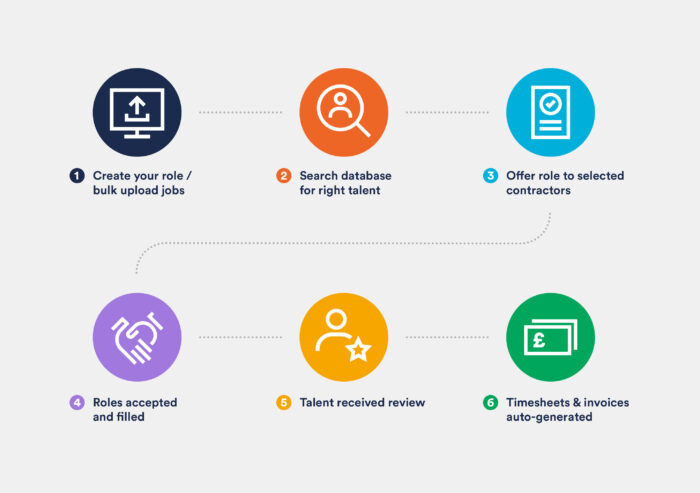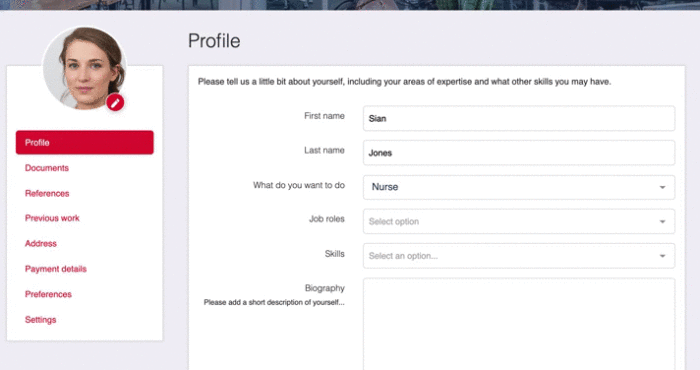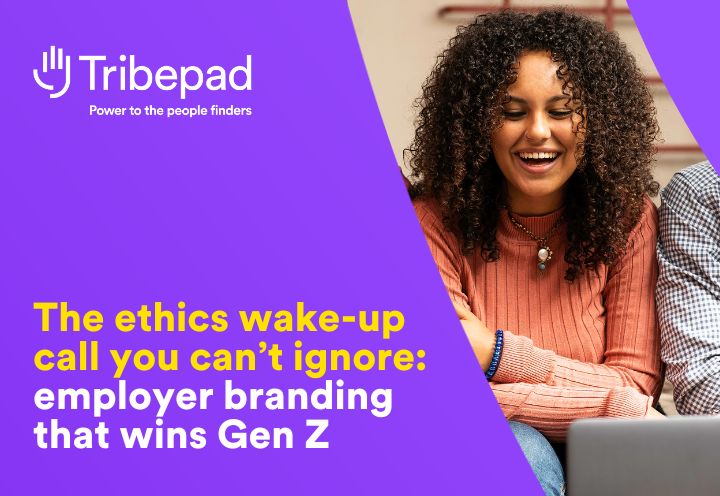Improving your candidate experience is almost certainly a priority right now. And you’re probably doing a pretty good job. (Helped out by our recent real-world tactics, no doubt )
But here’s the thing.
Most businesses are doing one thing majorly wrong, and it’s damaging their candidate experience massively. Or not doing one thing right, rather.
Keep reading. We’ll tell you what the problem is and show you an easy fix.
(And the best bit is, there’s a real competitive advantage to acting now, because this problem’s still flying mostly under the radar.)
The missing link for best-practice candidate experience
Here’s the problem: almost all candidate experience initiatives implicitly focus on your permanent workforce but ignore your flexible workforce. Which makes sense, right?
Those are the people who’re going through the most robust internal recruitment process. And the stakes feel higher.
Say you’re recruiting for a permanent healthcare assistant:
If Anja has a negative candidate experience, maybe she declines your offer (and let’s gloss over the possible Glassdoor reviews). Which sends you back to the drawing board, increasing cost-per-hire. And probably increasing overtime (and workloads!) or temp cover costs too, while the role’s empty.
Or:
Maybe Anja accepts your offer. But perhaps her negative perception of your business means she doesn’t understand the standards you expect. It’s not a million-mile stretch to start talking about reputation damage, when you extrapolate across your workforce. A slow decline, where you’re no longer seen as offering the same standard of healthcare you once did.
But here’s the thing.
They weren’t always, but today those stakes are just as high when recruiting contractors.
Why the contractor experience matters more today
CX matters more for contractors today because the flexible workforce has exploded.
Read more: How to maximise value from the non-traditional workforce
Rewind only a decade or so, and locums, contractors and temps weren’t nearly so ubiquitous. They were primarily used as urgent and unpredictable cover – so
the contractor candidate experience wasn’t nearly such an important factor.
Contractors accepted roles based primarily on availability and rates. And even if Jack or Ellie did decline your offer, you’d just ask Stuart or Candice instead. And even then, if Jack or Ellie didn’t meet your standards, it mattered less because it happened less. You’d just blacklist them and move on.
But now, the composition of the workforce has changed dramatically. PwC even predict permanent workers could represent only 9% of the workforce by 2030.
Almost every industry relies more on flexible talent than they used to.
- In healthcare, 1 in 5 of all licensed doctors in the UK work as locums. The number of doctors working as locums increased by 38% from 2013 to 2017.
- In higher education, 14% of staff were on atypical contracts for short-term, flexible work in 2017/18.
- In the legal sector, transient workers are one of three major talent pools predicted to dominate tomorrow’s law firm.
The fact is, contractors are almost certainly becoming a more significant chunk of your flexible workforce. And that’s when the contractor candidate experience starts to really matter.
Say you’re recruiting for a locum GP:
If Kelly has a poor experience, she might decline your offer – but that doesn’t only have implications now. It also means Kelly – and all your other Kellys – mightn’t apply in the future. The only thing worse than an uncovered shift and appointments chaos is consistently uncovered shifts and ongoing chaos.
Or:
Maybe Kelly accepts your offer. But she’s peeved with you, thanks to several scheduling mix-ups, and perhaps that attitude unintentionally transfers into her work. How long until patients – hyper-sensitive to the increased use of locums anyway – start gossiping that things aren’t what they used to be? Start looking elsewhere for their healthcare?
But on the other hand:
Imagine Kelly has an excellent experience. The process is fast, convenient, easy, and makes her feel valued. So now, she doesn’t just accept this shift; she prioritises you for future shifts too. Now Kelly’s working with you every week, leaving you with fewer uncovered shifts (and freeing the recruitment team to focus elsewhere).
And now Kelly knows the team well and slots easily into the culture. Productivity increases – not just Kelly’s but across the whole team, because continuity encourages engagement. And she starts to know your community too. Patients start to know and trust her.
So now, you have all the benefits of working with a permanent employee – trust, longevity, reliability, continuity, productivity, engagement – but with the flexibility of locum cover.
Let’s talk about delivering that second type of contractor candidate experience, then. Because it’s actually super simple – it’s just that most businesses are still relying on legacy contractor recruitment tactics.
A new type of software to optimise the contractor experience
Most businesses deliver a poor contractor experience because their contractor recruitment is seat-of-your-pants, reactive firefighting. That’s not much fun for your team – and agency spend is typically spiralling out of control too.
And it means your contractors have a fragmented and inconsistent experience.
Agency recruiters calling endlessly when they’re already booked. Hiring managers forgetting to pass on the new door code. Missed emails and crossed wires. Unreliable shifts. Short notice. Late payments.
There’s a better way – one that’s starting to make major waves. It’s called contractor management software.
Contractor management software is like the ATS you use for your permanent recruitment, but for contractors, freelancers, locums and temps.
It creates a central hub for your flexible workers – where you can build talent pools, create jobs, invite applications, auto-manage compliance, deliver onboarding workflows, track progress, sign-off timesheets and review performance.
It gives you visibility over how you work with contractors – and breathing space, to recruit more strategically. Plus it can save you 000s on agencies.
But most important, it delivers a fantastic contractor experience.
Contractors easily build and maintain profiles showcasing their skills, history, documentation, rates and availability. They get mobile invites to relevant jobs. They get the right onboarding information to do a great job, every time. They get paid on-time. They get alerts when their documents need renewing.
All of which is to say, they have an easy, reliable, convenient contractor experience that makes them feel valued. And that’s what delivering a great candidate experience is really about.
If you care about your candidates, care about your contractors
We’re all rightfully obsessed with improving the candidate experience. But almost everything you read; every set of best practices; every conversation; implicitly focuses on the candidate experience for permanent recruitment.
The workforce has changed – and is continuing to change, fast. Ignoring the fastest-growing talent pool is short-sighted.
Organisations have a huge opportunity to transform their mentality, from viewing contractors as an add-on to embracing them as a core component of the workforce. Ultimately to drive better business outcomes.





